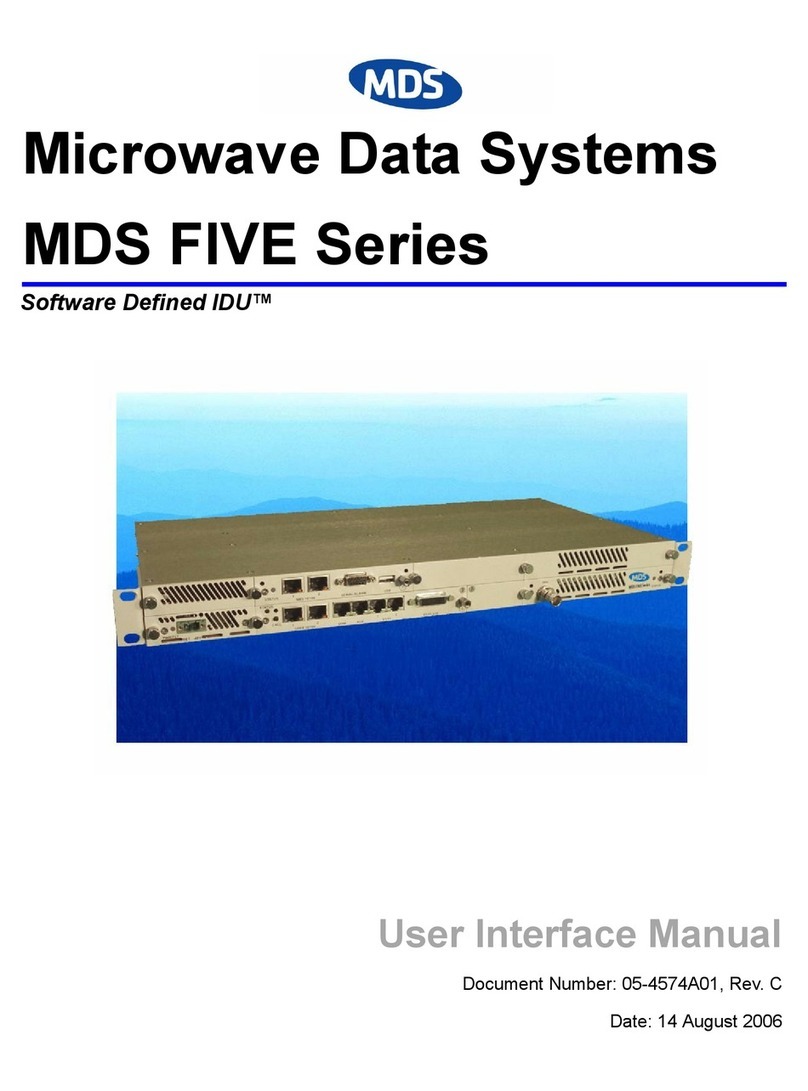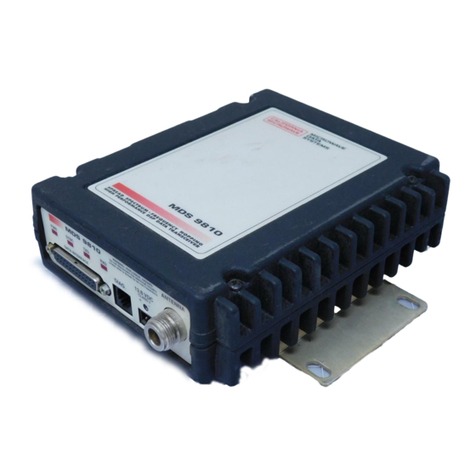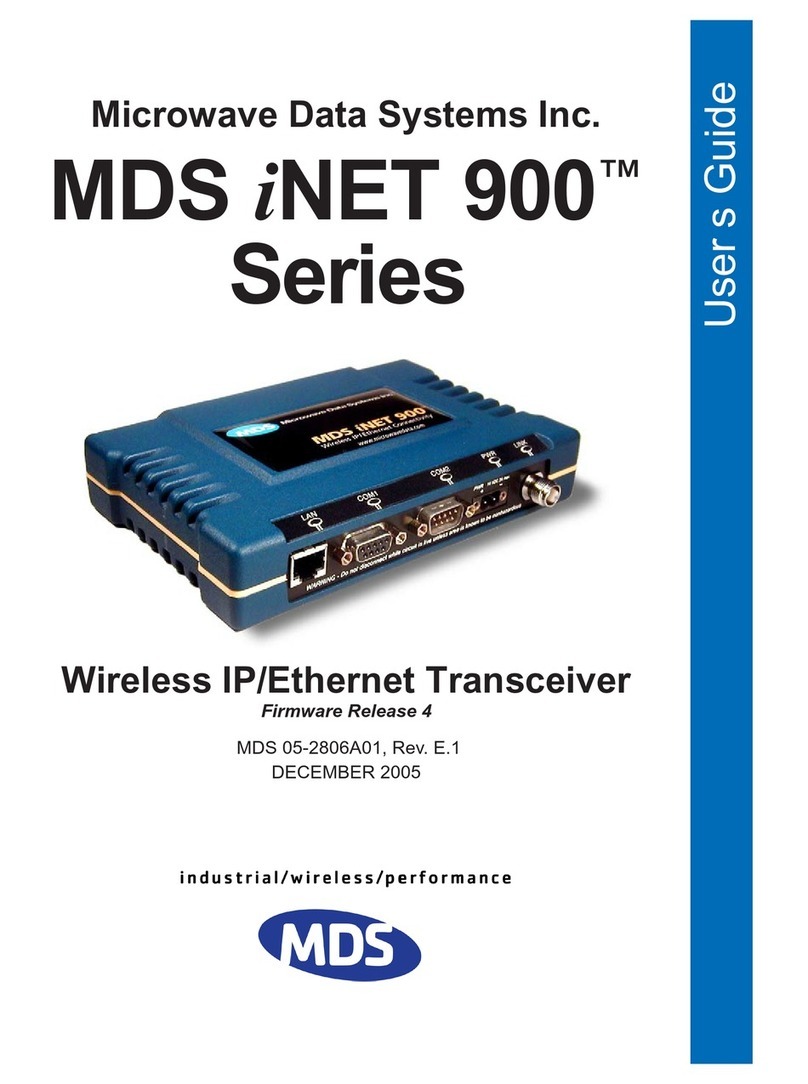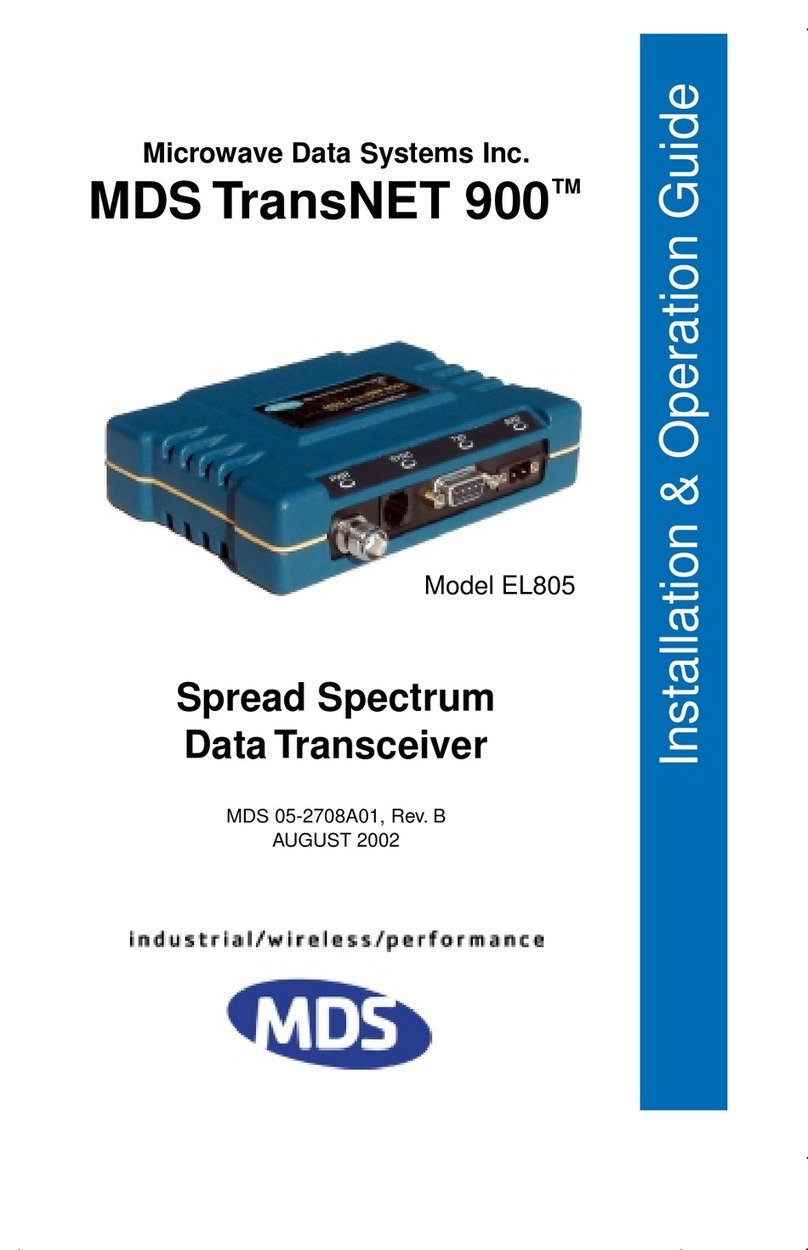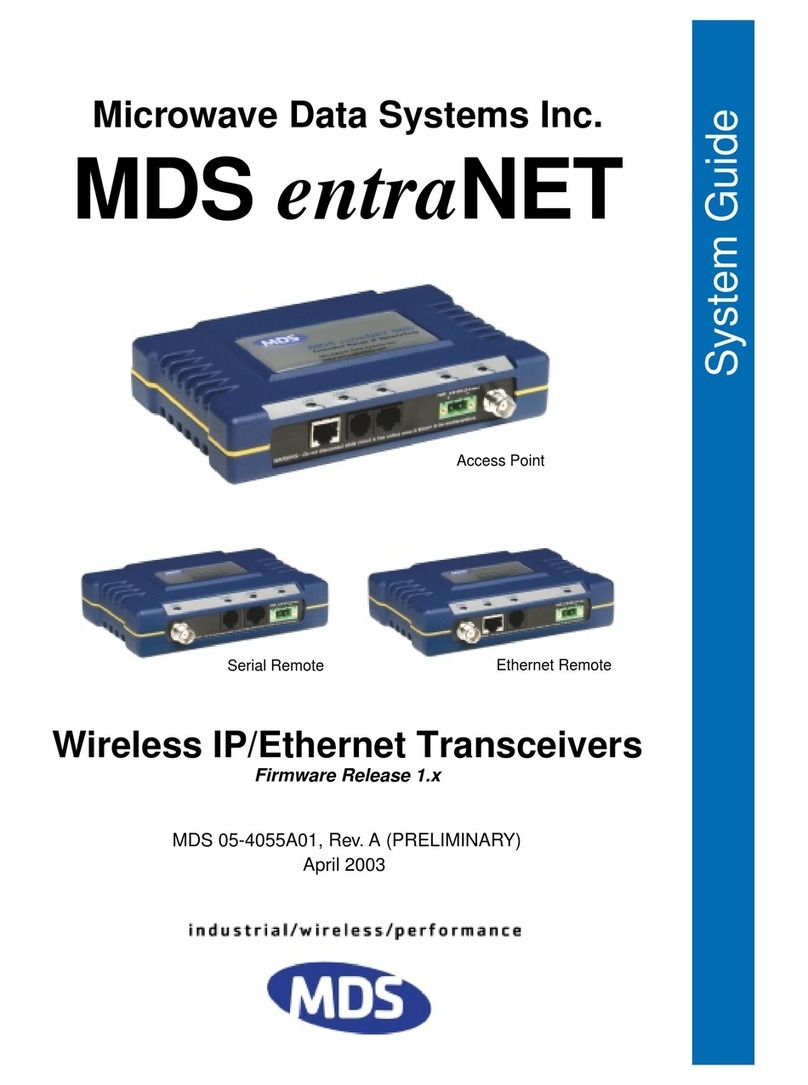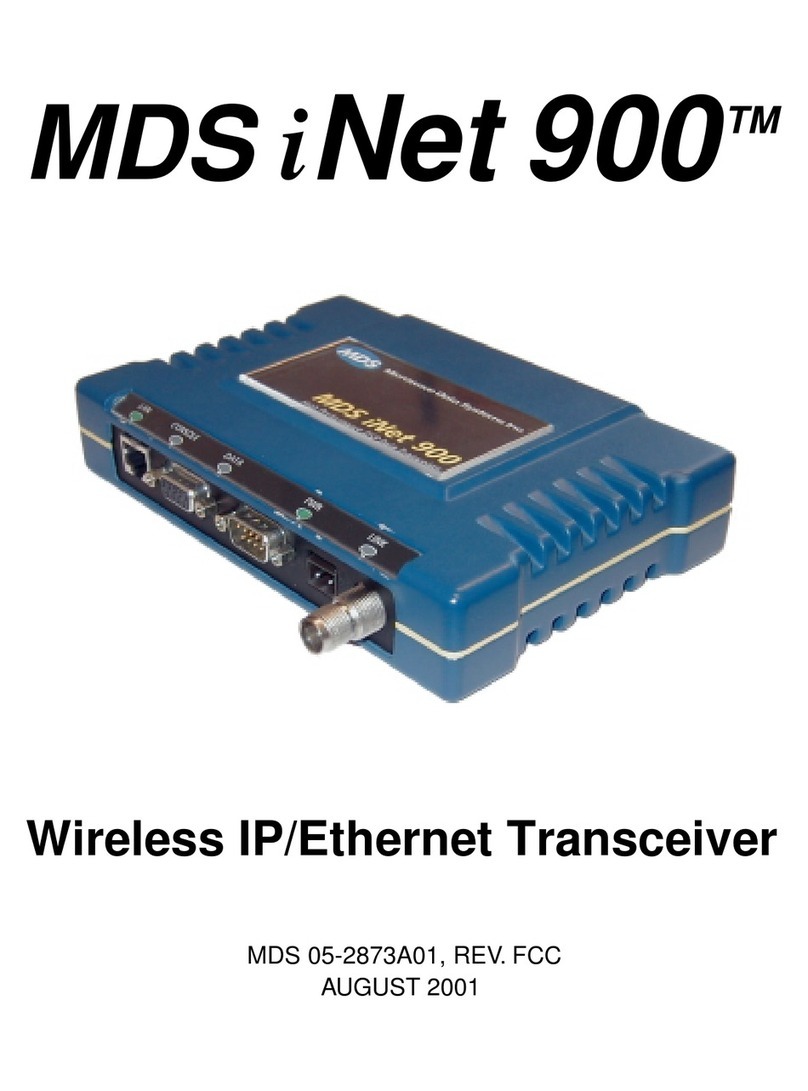
ii TABLE OF CONTENTS MDS 2141A01, Rev. A
CHAPTER 3—PROGRAMMING AND DIAGNOSTICS
INTRODUCTION------------------------------------------------------------------------------------------------------ 3-1
TERMINAL CONNECTION AND STARTUP ------------------------------------------------------------------- 3-1
Opening The Diagnostic Channel -------------------------------------------------------------------- 3-3
CAPABILITIES OF THE HHT -------------------------------------------------------------------------------------- 3-4
Review Operating Parameters and Diagnostic Information -------------------------------------- 3-4
Setting the Operating Parameters--------------------------------------------------------------------- 3-5
Program User Information ---------------------------------------------------------------------------- 3-5
USING THE HAND-HELD TERMINAL -------------------------------------------------------------------------- 3-5
Command Syntax--------------------------------------------------------------------------------------- 3-5
Shift Key------------------------------------------------------------------------------------------------- 3-5
Backspace (BKSP) Key ------------------------------------------------------------------------------- 3-5
Error Messages------------------------------------------------------------------------------------------ 3-6
Closing the Diagnostic Channel---------------------------------------------------------------------- 3-6
PROGRAMMING EXAMPLES------------------------------------------------------------------------------------- 3-6
PROGRAMMING OWNER’S INFORMATION ----------------------------------------------------------------- 3-8
PASSWORD PROTECTION----------------------------------------------------------------------------------------- 3-8
DIAGNOSTIC EVALUATION-------------------------------------------------------------------------------------- 3-8
Test Modes ---------------------------------------------------------------------------------------------- 3-9
EQUIPMENT DIAGNOSTICS DEFINITIONS------------------------------------------------------------------- 3-9
DIAGNOSTIC EXAMPLES-----------------------------------------------------------------------------------------3-10
RF Power Output Check -----------------------------------------------------------------------------3-10
Received Signal Strength Indication (RSSI) Check ----------------------------------------------3-10
PROGRAMMING AND TEST COMMANDS -------------------------------------------------------------------3-11
HAND-HELD TERMINAL SETUP DEFAULTS ---------------------------------------------------------------3-13
HAND-HELD TERMINAL WIRING -----------------------------------------------------------------------------3-14
Adapter Plug Wiring ----------------------------------------------------------------------------------3-14
HHT ALTERNATIVES ----------------------------------------------------------------------------------------------3-15
Cable Wiring for a PC or ASCII Terminal --------------------------------------------------------3-15
CHAPTER 4—FIELD TESTS AND ADJUSTMENTS
GENERAL -------------------------------------------------------------------------------------------------------------- 4-1
TEST EQUIPMENT REQUIRED ----------------------------------------------------------------------------------- 4-1
CONSTRUCTING A DATA TERMINAL EMULATOR-------------------------------------------------------- 4-3
REMOTE MAINTENANCE CONSIDERATIONS--------------------------------------------------------------- 4-5
INTRODUCTION TO FIELD TESTS & ADJUSTMENTS ----------------------------------------------------- 4-6
TEST PROCEDURES:
Basic Transceiver Checks ----------------------------------------------------------------------------- 4-7
Transmit Frequency, Squelch, Deviation and Receive Audio Output
For Radios with No Internal Modem-----------------------------------------------------4-10
For Radios with MDS’s Internal 1200 BPS Modem-----------------------------------4-11
For Radios with MDS’s Internal 4800 BPS Modem-----------------------------------4-14
For Units with MDS’s Internal 9600 BPS Modem ------------------------------------4-16
REMOTE MAINTENANCE MODULE—
Loopback Code Programming, Mode Selection, Calibration & Testing ----------------------4-19
